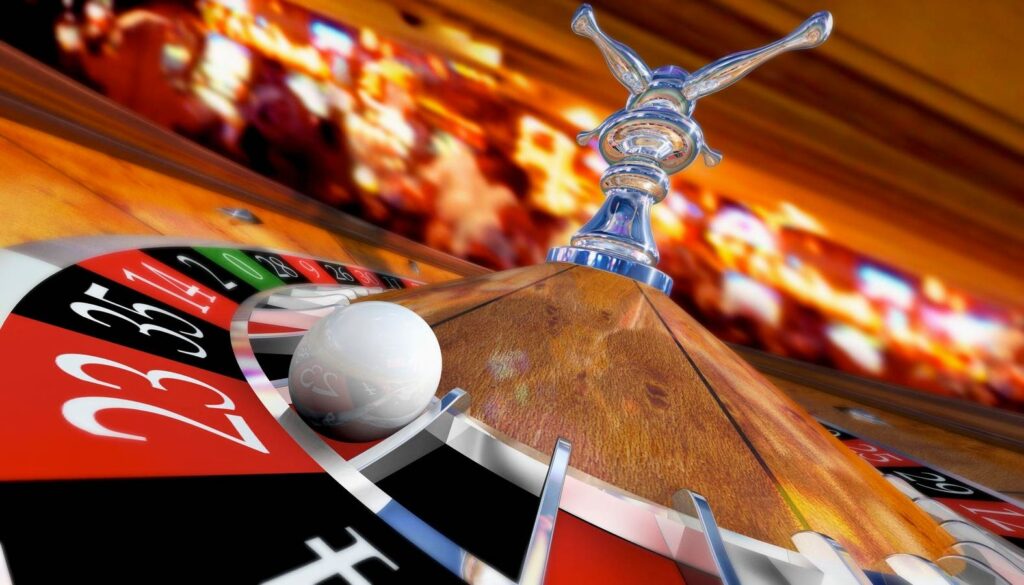The gambler’s fallacy is a common cognitive error that can have profound implications for decision making. Understanding the gambler’s fallacy, recognizing how it can influence decisions, and learning how to mitigate its effects is crucial for leaders who wish to make rational, informed choices.
Also known as the Monte Carlo fallacy, the gambler’s fallacy is based on the mistaken belief that if something happens more frequently than normal during a given period, it will happen less frequently in the future, or vice versa. Because it is based on our inherent misunderstanding of randomness, this fallacy often manifests in situations involving random events, such as gambling, where individuals wrongly assume that past outcomes influence future probabilities.
The gambler’s fallacy is a common cognitive error that can have profound implications for decision … [+]
gettyA famous example of this occurred on August 18, 1913, at the Casino de Monte-Carlo when black came up 26 times in a row on a roulette wheel. As word of this amazing streak spread through the casino, gamblers flocked to that table. They lost millions of francs betting on red in the mistaken belief that the streak must end. In reality, the odds of each spin coming up black remained the same each time, just as the odds of a tossed coin coming up “heads” are still 50:50, even if the last one hundred tosses came up “tails” (scientists have actually determined that the odds are 51:49 in favor of whichever side of the coin was facing up if it was flipped by a human; if tossed by a machine, the odds are indeed 50:50).
Impact on Business Decision Making
The gambler’s fallacy can impair decision making, particularly in situations where outcomes are influenced by random chance. This bias can lead to overconfidence in predicting future events based on past occurrences, which may not have any bearing on what will happen next.
In business, this can manifest in several ways.
Investors may fall prey to the gambler’s fallacy by believing that a stock that has performed poorly for an extended period is “due” for a rebound. Conversely, they may assume that a consistently successful stock is bound to decline. Either assumption can lead to misguided investment strategies and significant financial losses.
Sales teams might misinterpret patterns in customer behavior, assuming that a period of low sales will be followed by a surge, or that a streak of high sales will inevitably end. This can lead to inappropriate allocation of resources or missed opportunities.
The gambler’s fallacy can also affect risk management decisions. Leaders may underestimate risks after a series of positive outcomes, assuming that “bad luck” is less likely to occur or that positive trends will continue indefinitely. This can result in inadequate preparation for potential setbacks or crises.
6 Ways to Overcome the Gambler’s Fallacy
Recognizing and overcoming the gambler’s fallacy is essential for making sound decisions, especially in environments characterized by uncertainty and risk. Here are some strategies that you can use to avoid falling into this cognitive trap:
- Education and Awareness: The first step in overcoming the gambler’s fallacy is understanding the concept and acknowledging its potential influence on decision making. Educating oneself and others about the fallacy can raise awareness and reduce the likelihood of falling prey to it.
- Embrace Probabilistic Thinking: Decision-makers should focus on the actual probabilities of events rather than relying on perceived patterns. This involves understanding that independent events do not influence each other and that the odds remain constant regardless of past outcomes. Embracing probabilistic thinking can help leaders make more rational, data-driven decisions.
- Use Decision-Making Frameworks: Implementing structured decision-making frameworks can help counteract cognitive biases like the gambler’s fallacy. Techniques such as red teaming, scenario planning, and pre-mortem analysis encourage a comprehensive examination of potential outcomes and risks, reducing the influence of faulty assumptions.
- Consult Diverse Perspectives: Seeking input from a diverse group of stakeholders can also mitigate the effects of the gambler’s fallacy. Different perspectives can challenge erroneous beliefs and provide a more balanced view of potential outcomes, leading to better-informed decisions.
- Leverage Technology and Data Analytics: Modern technology and data analytics tools can assist in making more accurate predictions and decisions by analyzing large datasets and identifying genuine patterns. By relying on data rather than intuition, leaders can avoid the pitfalls of the gambler’s fallacy.
- Mindfulness and Self-reflection: Practicing mindfulness and regularly reflecting on past decisions can help individuals recognize when they are falling into the trap of the gambler’s fallacy. By critically assessing their thought processes, leaders can identify and correct biased thinking before it leads to poor decisions.
The gambler’s fallacy is a powerful cognitive bias that can significantly distort decision making, particularly in uncertain environments. By understanding this fallacy, recognizing its impact, and employing strategies to overcome it, leaders can improve their decision-making processes and avoid costly mistakes.
